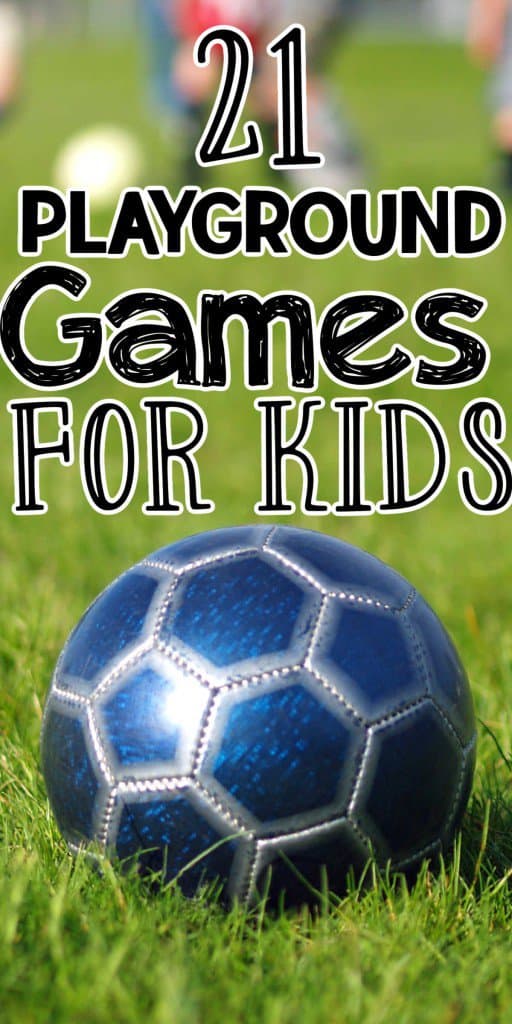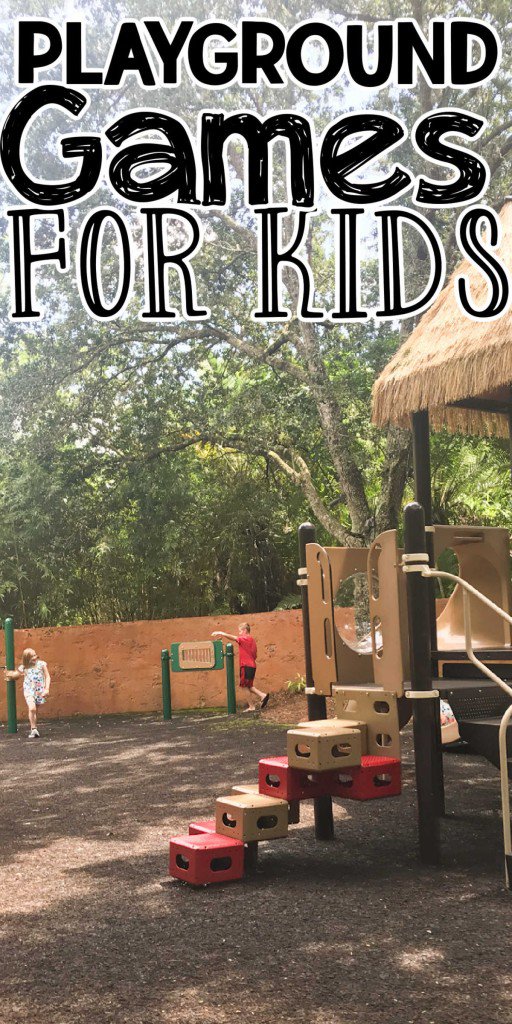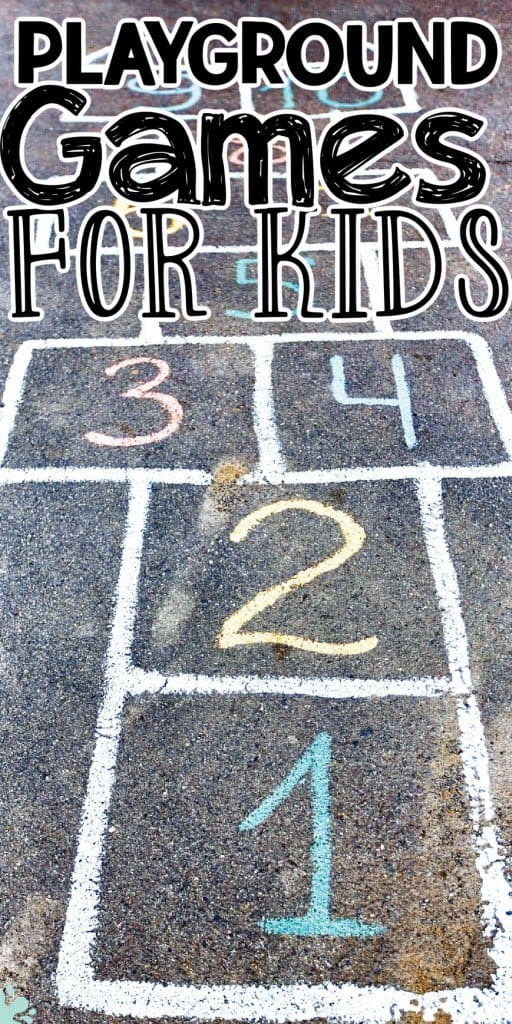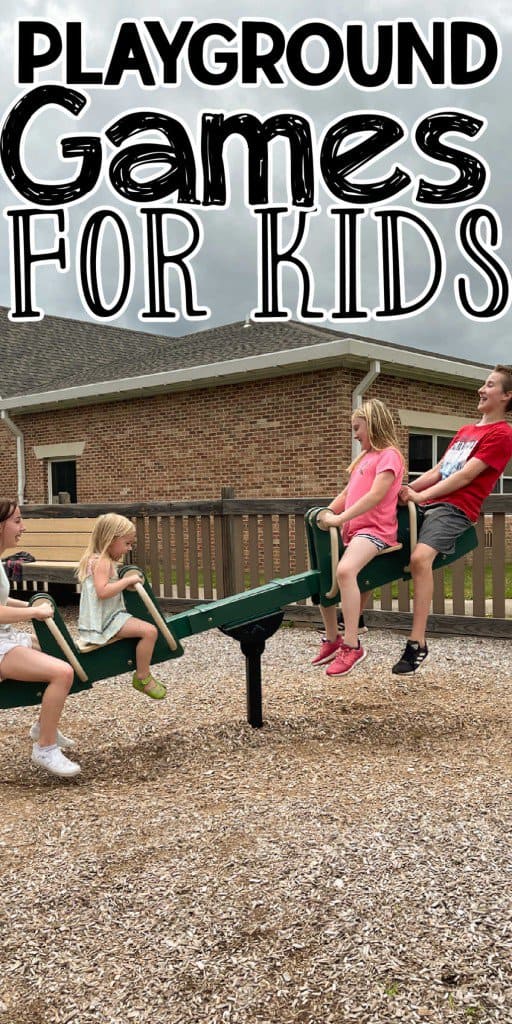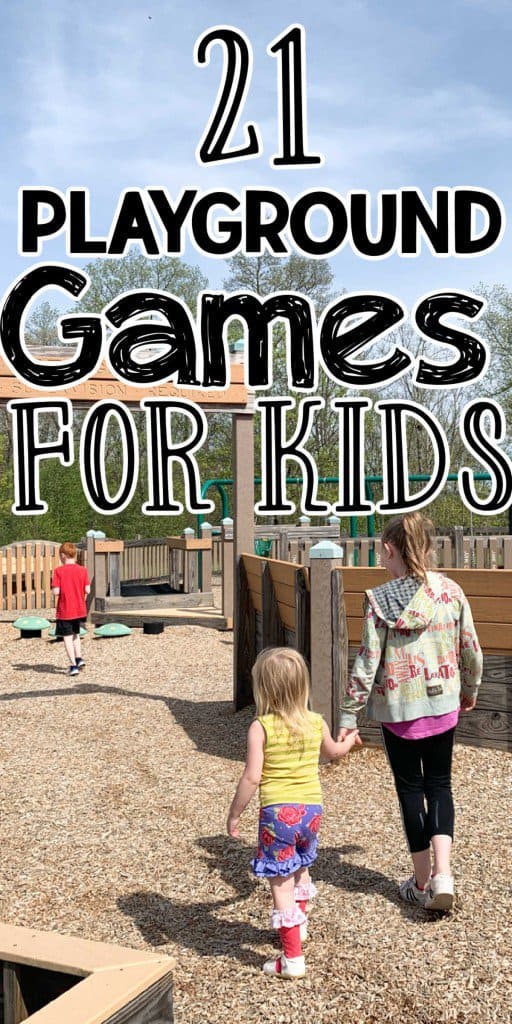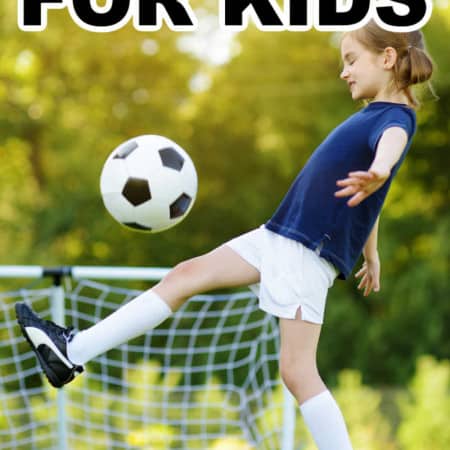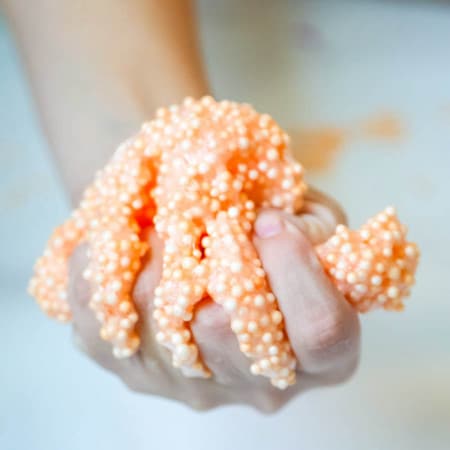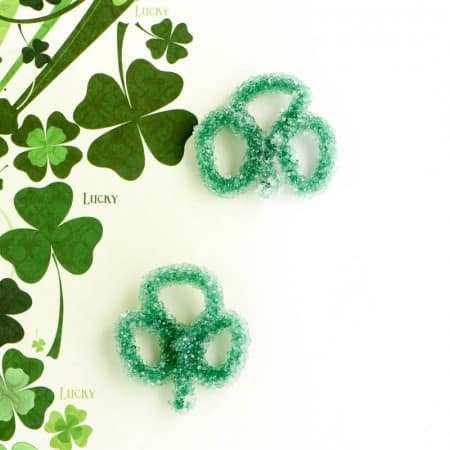Playground games are a great way for kids to stay active, develop social skills, and have fun outdoors. From classic games to more modern games there are plenty of options to keep kids entertained on the playground. In this blog post, we will explore popular playground games for kids. These are also complete with detailed instructions on how to play. Whether your child is looking for a new game to play with friends or planning a field day event, these playground games for kids are sure to be a hit. So, let’s dive in and discover some fun playground games for kids!
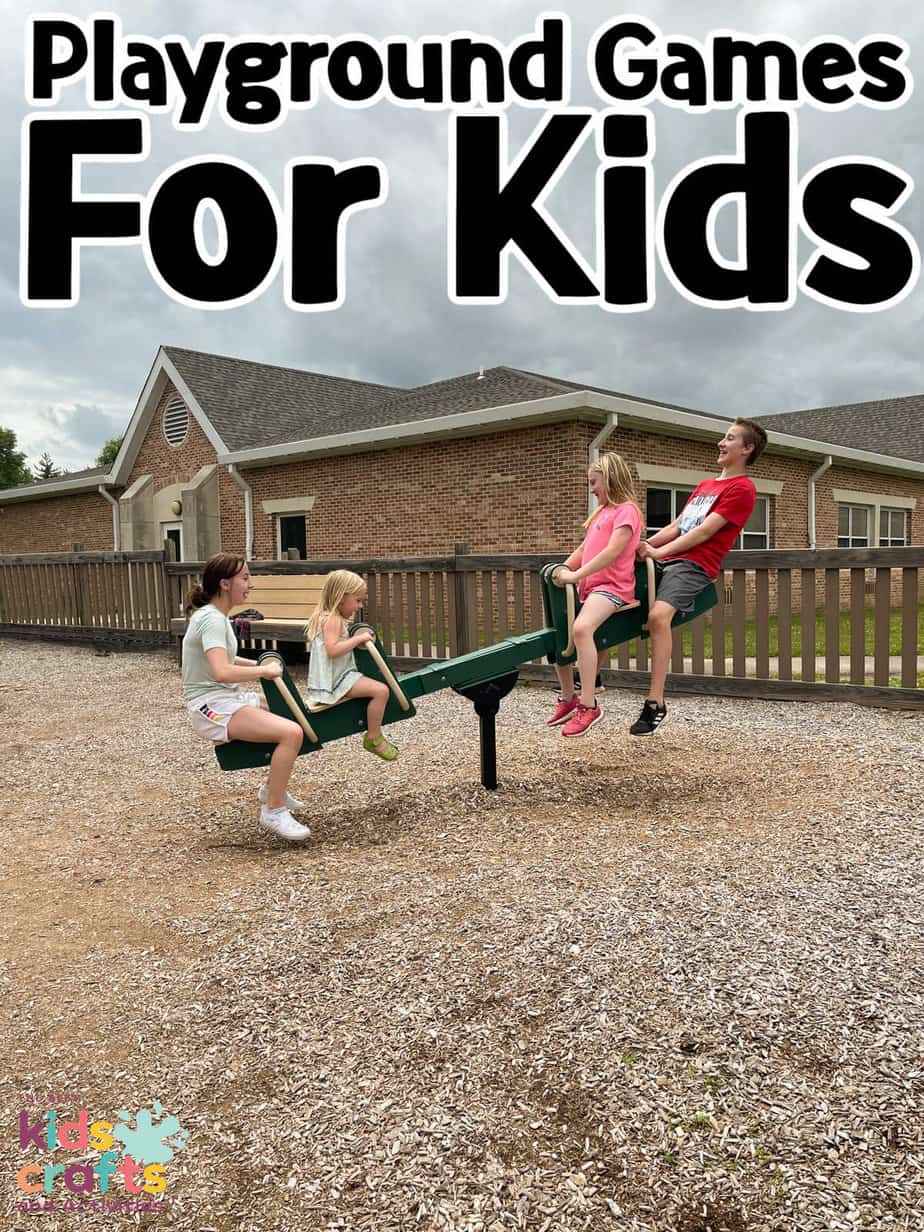
Playground Games for Kids
Whenever we visit the playground my kids don’t take long to get bored with the slides, the swings, and other playground equipment and they want to expand on the playtime. Since there are always a lot of kids at the playground it is easy to get a playground game going. There are many classic outdoor games that are great for older kids and younger kids to play together.
This list of playground games is also great for teachers to have the kids play when they are at school. If you are looking for simple playground games for kids to play on the school playgrounds this list has all of the classic playground games covered. We have included the supplies that you need to play the games and how to play them.
If you have a larger group of kids playing on the playground you may want to split them up into smaller groups when the kids are playing. You may also want to split younger children and older children up if you have kids of different ages playing these play ground games for kids.
There are so many different games that kids can play when they are outside on the playground to make playtime even more fun. These structured games are beneficial to kids along with being an excellent way for kids to have fun with other kids.
Games for Kids
- Would you rather questions for kids
- Paper and Pen games for kids
- Water Balloon Games for Kids
- Never Have I Ever Questions for Kids
- Trampoline Games for Kids
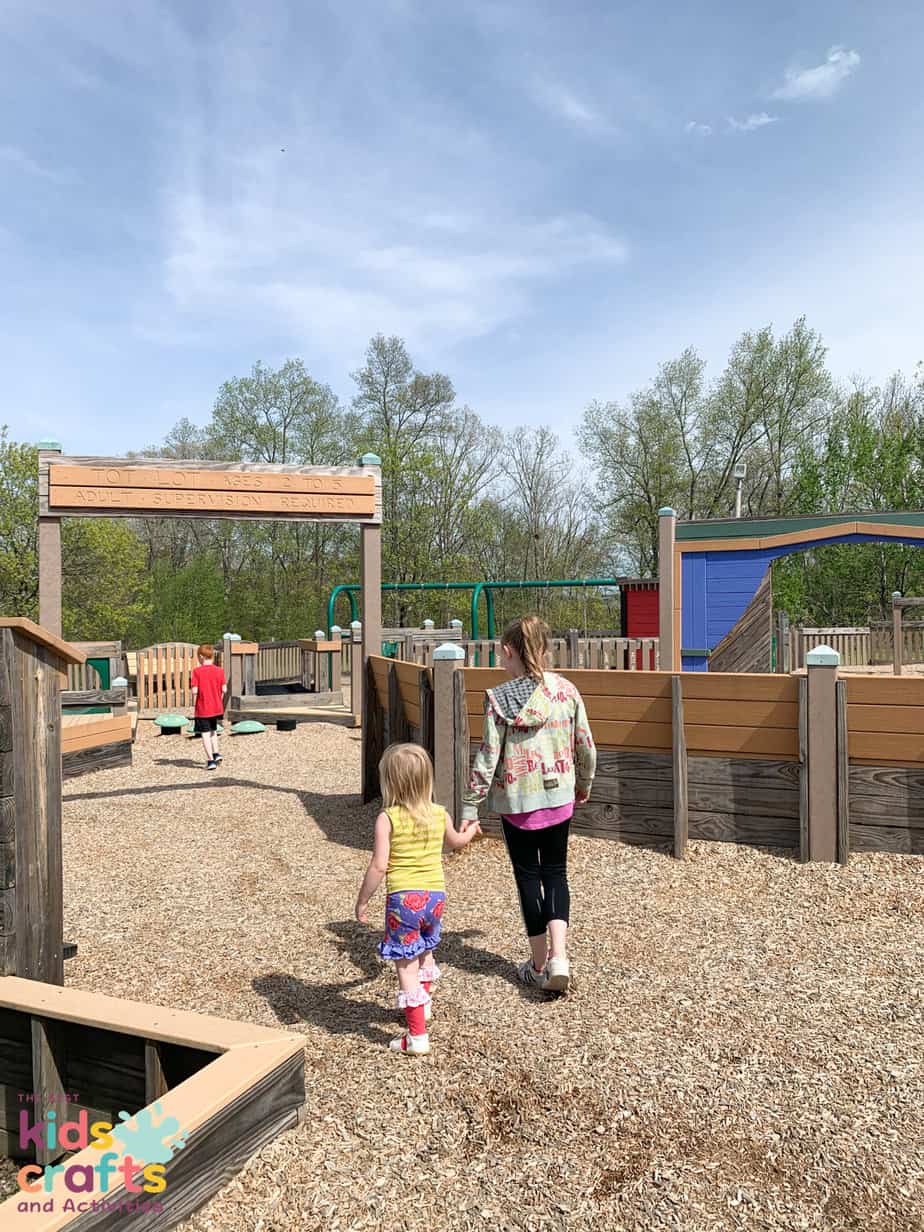
What are the Benefits of Playground Games for Kids?
Playground games offer a range of physical, social, and cognitive benefits for children of all ages. Here are some of the benefits of playground games:
- Physical development. Playground games encourage children to move and engage in physical activity, which can help improve their overall health and fitness levels. Games such as tag, hopscotch, and kickball help develop gross motor skills such as running, jumping, and throwing.
- Social development. Playground group games help children learn how to interact with others, negotiate rules, and resolve conflicts. Games such as Red Rover and Capture the Flag promote teamwork and cooperation, while games like Follow the Leader and Simon Says help develop communication skills and encourage socialization.
- Cognitive development. Playground games can also help improve cognitive skills such as problem-solving, decision-making, critical thinking, and spatial awareness.
- Emotional development. Playground games can help improve emotional regulation and self-esteem by providing opportunities for success and overcoming challenges. Games like Freeze Tag allow children to experience a sense of accomplishment as they successfully complete the game’s objectives.
- Physical Exercise. Being outside in the fresh air and running around is a great way to get kids moving and for them to have physical exercise while having fun.
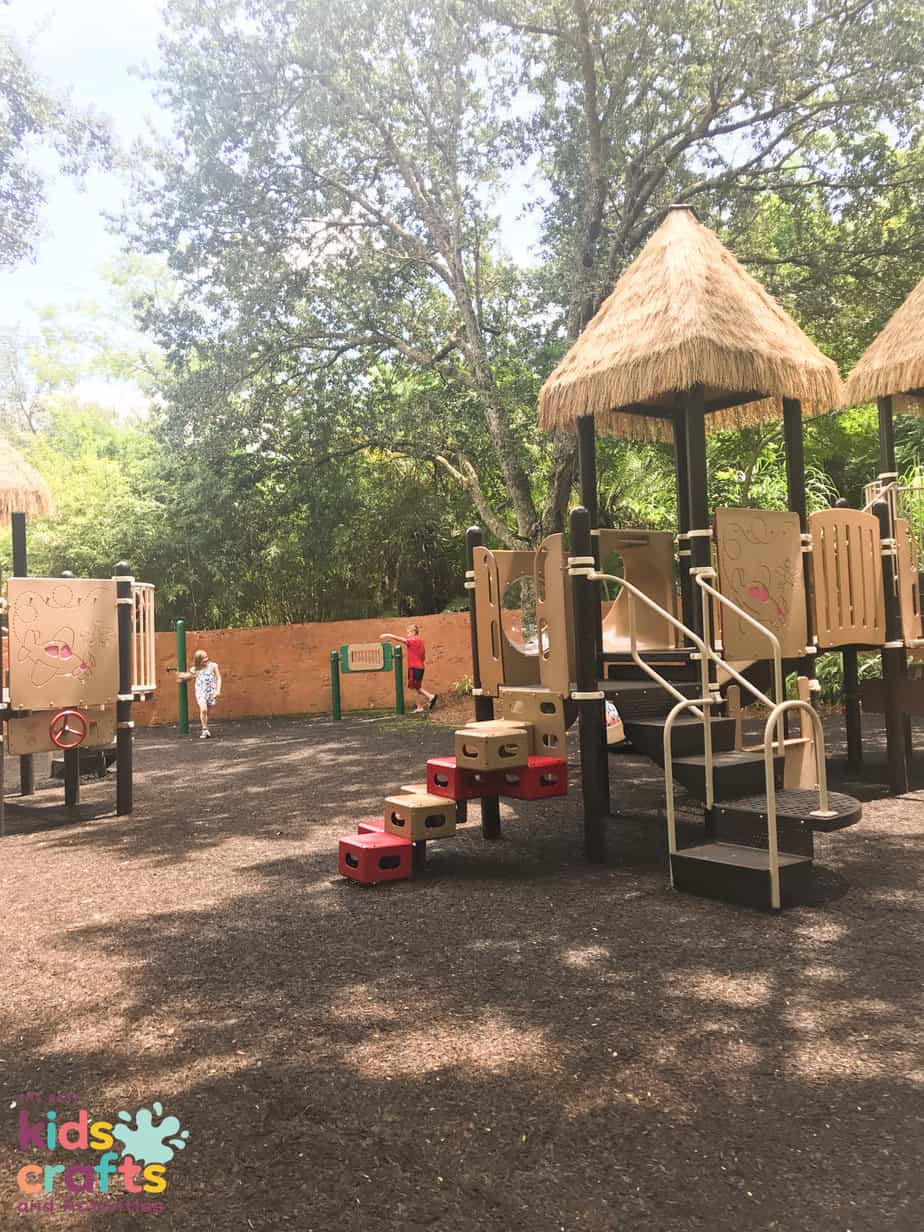
Tug of War
Tug of War is a classic game that involves two teams competing against each other by pulling on opposite ends of a rope. The objective of the game is to pull the rope in such a way that the opposing team is pulled across a designated line in the middle of the playing area.
Items needed: Long rope, bandana or string to tie in the center of the rope.
How to play Tug of War
- Divide players into two even teams and mark a line in the middle of the playing area or place a cone to make the center. Make sure the line is clearly visible and that there’s plenty of space around it to prevent injuries.
- Tie a rope around the middle of the rope and have each team grab an end of the rope.
- When the game starts, each team pulls the rope as hard as they can, trying to make the other team cross the line.
- The team that manages to pull the other team over the line wins the game.
- To make the game more challenging, you can have a referee call fouls if a player steps over the line or if they pull the rope in an illegal way. For example, players should not wrap the rope around their hands or use any other equipment to assist their pulling.
- If you have a large group of players, you can make the game more interesting by having multiple teams compete against each other in a tournament-style format.
Blind Man’s Bluff
Blind Man’s Bluff is a classic playground game that involves one player being blindfolded and trying to tag other players while they move around and the object of the game is to try to avoid being caught. It is a fun game that can be played with kids of all ages and is a great way to develop listening and communication skills.
Items Needed: Blindfold or have the kid who is “it” close their eyes.
How to Play:
- Choose one player to be the “blind man” and blindfold them.
- The blind man stands in the middle of the playing area while the other players move around them, trying to avoid being caught.
- The blind man tries to tag other players by listening to their movements and guessing where they are. Once the blind man tags a player, that player becomes the new blind man.
- To make the game more challenging, you can have players move around quietly or make noise to confuse the blind man. You can also establish boundaries to limit the playing area and prevent players from running too far away.
- It’s important to establish safety rules before playing, such as no pushing or running into each other, and making sure that the blind man is not near any obstacles or dangerous areas.
Duck Pond aka Duck, Duck, Goose
Duck, Duck, Goose is a classic children’s game that is often played at parties, in school, or during recess. This great game is simple and one that young children always love to play.
How to Play:
- Gather a group of players and have them sit in a circle on the ground or floor.
- Choose one player to be the “goose”. The goose stands up and walks around the outside of the circle, tapping each player on the head and saying “duck” as they tap.
- After tapping several players, the goose chooses one player and says “goose” instead of “duck”.
- The chosen player jumps up from their spot and chases the goose around the circle, trying to tag them before they can get back to the empty spot where the player was sitting.
- If the goose successfully makes it back to the empty spot without being tagged, the player who was tagged becomes the new goose and the game starts again.
- If the goose is tagged, they continue to be the goose for another round.
- To add more excitement to the game, you can vary the speed and intensity of the tapping and change the direction of the goose’s movement.
What’s the Time, Mr. Wolf?
What’s the Time, Mr. Wolf? is a classic children’s game that is played outdoors with three or more players. What’s the Time, Mr. Wolf? is a fun game that encourages physical activity, counting skills, and listening comprehension.
How to Play:
- Choose one player to be “Mr. Wolf” and have them stand at one end of the playing area, with their back to the other players.
- The other players stand at the opposite end of the playing area, and ask “What’s the time, Mr. Wolf?”.
- Mr. Wolf responds with a time, such as “It’s 1 o’clock”.
- The other players then take that many steps toward Mr. Wolf, counting out the steps as they go. For example, if Mr. Wolf said “It’s 3 o’clock”, the players would take three steps toward him.
- The players then ask “What’s the time, Mr. Wolf?” again and Mr. Wolf responds with another time.
- The players continue to take steps toward Mr. Wolf, counting out the steps, until Mr. Wolf responds with “Dinner time!”.
- When Mr. Wolf says “Dinner time!”, he turns around and tries to tag one of the players. The other players run back to the starting line to avoid being tagged.
- If a player is tagged, they become the new Mr. Wolf and the game starts again. If no one is tagged, the original Mr. Wolf continues to be Mr. Wolf for another round.
Cat and Mouse
Cat and Mouse is a fun game that encourages physical activity and strategy. It can be played by children of all ages and is a great way to build social skills and promote teamwork. However, it’s important to establish safety rules and guidelines to prevent injuries and ensure fair play.
How to Play:
- Choose two players to be the “cat” and the “mouse”. The other players form a circle, holding hands.
- The cat stands outside the circle and the mouse stands inside the circle.
- The game starts when the cat enters the circle and tries to catch the mouse.
- The mouse can move around the circle and through the arms of the other players to avoid being caught by the cat.
- If the mouse is caught by the cat, the players switch roles and the game starts again.
- The game can also be played with multiple cats and mice, or with players switching roles after a certain amount of time.
- To make the game more challenging, you can add rules such as the mouse having to hop on one foot or the cat having to crawl on all fours.
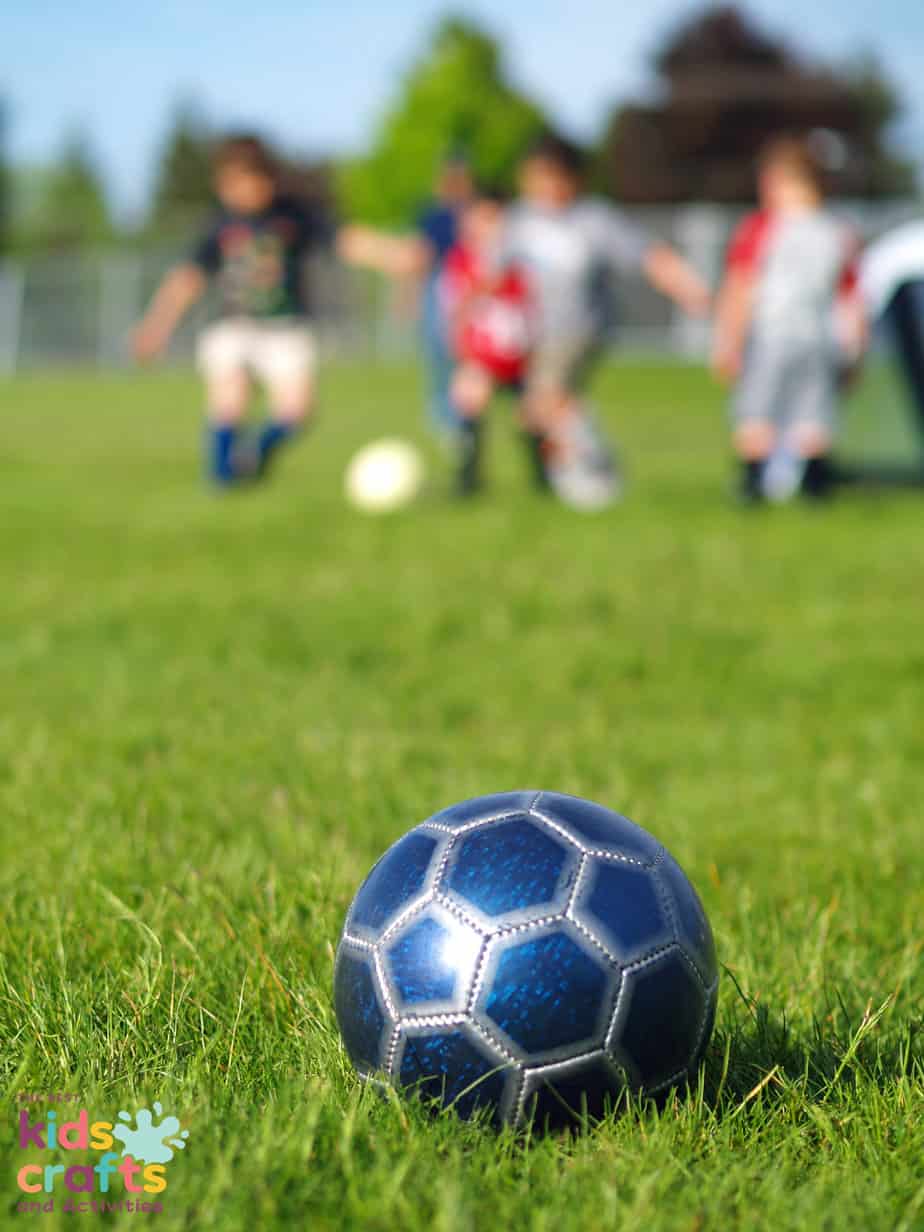
Kickball
Kickball is a fun and active game that encourages physical activity, teamwork, and strategic thinking. Similar to baseball, except there is no bat needed this ball game is great for kids to play.
What is needed: A large ball, bases
How to Play:
- Gather a group of players and choose two teams. The teams take turns being in the field and at bat.
- Mark out the playing field using cones or other markers. The field should have four bases arranged in a square, similar to a baseball diamond.
- The pitcher rolls the ball to the player at bat who is standing at the home base, who kicks the ball and runs to first base. The fielding team tries to catch the ball and tag the runner out before they reach a base.
- The runner must touch each base in order before advancing to the next base. If a fielder catches the ball before it hits the ground, the runner is out. If the ball is kicked out of bounds, the runner is allowed to advance to the next base.
- Once the runner has reached first base, the next player at bat takes a turn. The team at bat continues to take turns until they have three outs. After three outs, the teams switch roles and the other team takes a turn at bat.
- The game is played for a set number of innings, with each inning consisting of both teams taking a turn at bat and in the field.
- The team with the most runs at the end of the game wins.
Spud
Spud is a fun and active game that can be played with a group of three or more players. This game is a fast-paced game that encourages physical activity, hand-eye coordination, and strategy.
What is needed: Small ball
How to Play:
- Choose one player to be “it” and have them stand in the center of the playing area. The other players stand in a circle around the “it” player.
- The “it” player throws the ball up in the air and calls out the name of another player in the circle.
- The named player runs to catch the ball while the other players scatter in all directions.
- Once the named player catches the ball, they shout “Spud!” and all players freeze.
- The player with the ball takes three steps toward any player and throws the ball at them, trying to hit them with the ball. If the player is hit, they get a letter “S” and become “it”. If the player is missed, the person who threw the ball gets a letter “S”.
- The game continues with the new “it” player throwing the ball and calling out the name of another player.
- If a player gets all four letters in “Spud”, they are out of the game.
Capture the Dragon’s Tail
Capture the Dragon’s Tail is a fun and active game that is similar to Capture the Flag. It requires a large group of players and can be played indoors or outdoors. It can be played by children of all ages and is a great way to promote teamwork and sportsmanship.
How to Play:
- Divide players into two teams and have each team choose a “dragon”. The rest of the players become the “tails” on their respective teams.
- The tails on each team line up behind their dragon, holding onto each other’s waist or hips. The dragon’s job is to protect their team’s tail while trying to capture the other team’s tail.
- The playing field is divided into two halves with a designated boundary line in the center.
- The game starts with both dragons in the center of the playing field. When a whistle blows or the words go are said, the dragons run to the other team’s side to capture their tail while protecting their own.
- If a tail is captured by the other team’s dragon, the tail must drop off and go to a designated area to wait until the end of the round. The dragon must return to their own side of the field with the captured tail without getting their own tail captured.
- The game is played for a set amount of time, and the team with the most tails at the end of the game wins.
Follow the Leader
Follow the Leader is a classic children’s game that can be played with a small or large group of players. The game requires no equipment and is a fun way to encourage creativity and physical activity. Follow the Leader is a fun and creative game that encourages physical activity and creativity. It can be played indoors or outdoors and is suitable for children of all ages.
How to Play:
- Choose one player to be the leader and have them stand at the front of the group.
- The leader then starts to move around in any way they like, such as skipping, jumping, or hopping. The other players must follow the leader’s movements exactly.
- The leader can also add in different movements or actions, such as clapping, spinning, or crawling on the ground. The other players must follow along with these actions as well.
- The game continues with the leader changing up their movements and the other players following along.
- If a player is unable to follow the leader’s movements or does something different, they are out of the game. The last player standing becomes the new leader.
- The game can also be made more challenging by having the leader go faster or by adding obstacles for the players to navigate.
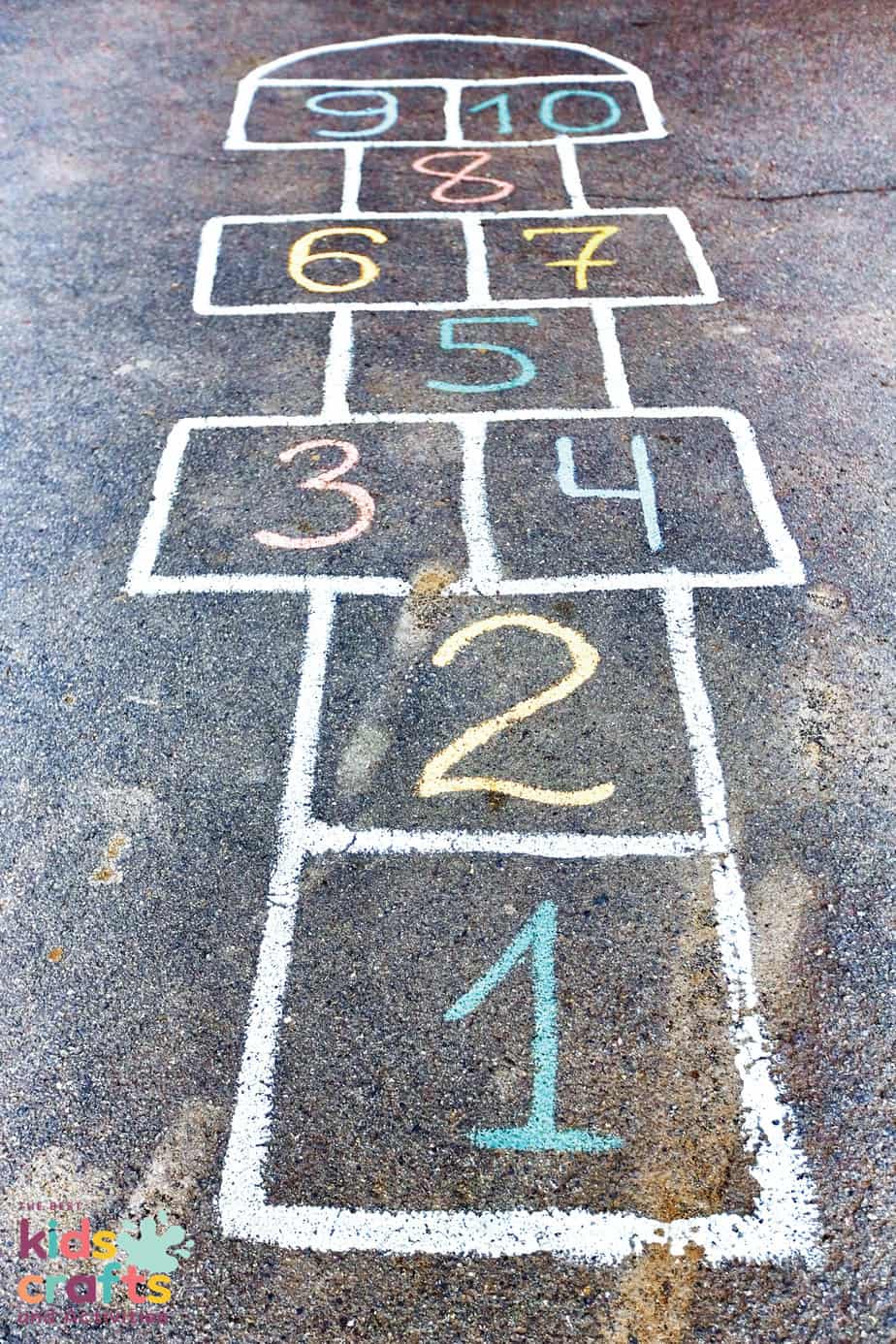
Hopscotch
What is needed: Sidewalk chalk
How to Play:
- Draw a hopscotch grid on the ground with chalk or tape. The grid should consist of a series of squares, usually numbered from one to ten, arranged in a specific pattern. The first square is typically a single square, and the rest of the squares are arranged in pairs.
- Choose a player to go first. The player tosses the small object onto the hopscotch grid, aiming for square one.
- The player then hops on one foot into square one, being careful not to touch the lines or lose their balance. They then hop on one foot into each consecutive square, skipping over the square with the object.
- When the player reaches the end of the grid, they turn around and hop back, picking up the object on the way.
- If the player completes the entire course without making a mistake, they toss the object onto square two and repeat the process.
- If a player loses their balance, touches a line, or steps on a square with the object, they lose their turn, and the next player goes.
- The game continues with each player taking turns until they have completed the entire course.
Ghost in the Graveyard
Ghost in the Graveyard is a fun and exciting game that encourages creativity, teamwork, and physical activity. This game is a fun and spooky game. It is typically played outdoors in the dark with a group of friends.
How to play:
- Choose one player to be the ghost. The other players are the runners.
- Pick one spot in the area to be the base, such as a tree or a bench.
- The ghost chooses a hiding spot and counts to a predetermined number, such as 20, while the runners hide.
- Once the ghost has finished counting, they yell, “Ghost in the Graveyard!” and start searching for the runners.
- The runners must try to make it back to the base, without getting caught by the ghost.
- If a runner is caught by the ghost, they become a ghost themselves. They must help the original ghost catch the remaining runners.
- If a runner makes it back to the base without getting caught, they are safe and can continue playing.
- The game continues until all runners have been caught or until a predetermined time limit has been reached.
Capture the Flag
Capture the Flag is a classic outdoor game that is typically played with two teams. The objective of the game is to capture the other team’s flag and bring it back to your team’s base without getting caught.
Items Needed: A flag for each team.
How to Play:
- Divide players into two teams and mark a boundary line to separate the two teams’ territories.
- Each team chooses a “flag” and places it in their territory. The flag can be anything that’s easily visible, such as a bandana or a small flag.
- The goal is for each team to capture the other team’s flag and bring it back to their own territory without getting caught.
- If a player is tagged by an opponent while in the opponent’s territory, they must go to “jail” in the opponent’s territory.
- A player can be freed from jail if a teammate tags them while in the opponent’s territory.
- The game ends when a team successfully captures the other team’s flag and brings it back to their own territory, or when all players from one team are in jail.
- The team with the most players remaining at the end of the game or the team that captures the other team’s flag wins.
Hot Potato
Hot Potato is a classic children’s game that can be played with a group of friends or family members. The objective of the game is to pass around a “hot potato” as quickly as possible without getting caught with it when the music stops.
Items Needed: A small ball , hacky sack, or a potato
How to Play:
- Gather a group of players and a small object, such as a ball or stuffed animal, to use as the “hot potato.”
- Start playing music and have the players pass the hot potato around the circle or back and forth between players as quickly as possible.
- The player holding the hot potato when the music stops is out for that round.
- Continue playing rounds with players being eliminated until there is only one player left.
- The last player standing is declared the winner.
Sharks and Minnows
Sharks and Minnows is a classic pool game that can be played with a group of swimmers. The objective of the game is for the “minnows” to make it from one side of the pool to the other without getting tagged by the “shark. Sharks and Minnows is a fun and exciting game that encourages swimming skills and teamwork.
How to Play:
- Choose one player to be the shark and have the other players be the minnows. The minnows line up on one side of the field, while the shark stands in the middle.
- The shark starts the game by calling out “Sharks and Minnows, go!” The minnows then try to run across to the other side without getting tagged by the shark.
- If a minnow gets tagged by the shark, they become a shark as well and help tag the remaining minnows.
- The game continues until all of the minnows have been tagged or until a predetermined time limit has been reached.
- The last minnow to get tagged becomes the shark for the next round.
Mother, May I?
Mother, May I? is a classic children’s game that can be played with a group of friends or family members. The objective of the game is for one player to act as the “Mother” and give commands to the other players to advance toward her.
How to Play:
- Choose one player to be the “Mother” and have the other players line up at a distance from her.
- The Mother takes turns giving commands to the players, such as “Take three giant steps forward” or “Take two baby steps backward.”
- The other players must ask “Mother, may I?” before taking each step. If they forget to ask or take a step without permission, they must return to the starting line.
- The first player to reach the Mother wins and becomes the new Mother for the next round.
Simon Says
Simon Says is a classic children’s game that can be played with a group of friends or family members. The objective of the game is for one player to act as “Simon” and give commands to the other players to follow.
How to Play:
- Choose one player to be “Simon” and have the other players line up in front of him/her.
- Simon starts the game by saying “Simon says…” followed by a command, such as “Simon says touch your toes” or “Simon says hop on one foot.”
- The other players must follow the command only if Simon says “Simon says” before it. If Simon does not say “Simon says” before the command and a player follows it, they are out for that round.
- The game continues with Simon giving commands and players following them only if Simon says “Simon says” before the command.
- The last player standing or the first player to reach Simon’s position wins and becomes the new Simon for the next round.
Red Light, Green Light
Red Light, Green Light is a classic children’s game that can be played with a group of friends or family members. This game is a fun and simple game that encourages listening skills and following instructions.
How to play:
- Choose one player to be the “traffic light” and have the other players line up at a starting line some distance away.
- The traffic light faces away from the other players and calls out “Green light!” to signal that the players can start moving towards him/her.
- The traffic light then calls out “Red light!” and turns around to face the other players. When the traffic light says “Red light!” the other players must freeze and stop moving.
- The traffic light may turn around again and call out “Green light!” to signal that the players can start moving again. The traffic light can also say “Yellow light!” to signal that the players should move slowly.
- The game continues with the traffic light calling out commands and players moving or stopping accordingly. The first player to reach the traffic light or cross a designated finish line wins and becomes the new traffic light for the next round.
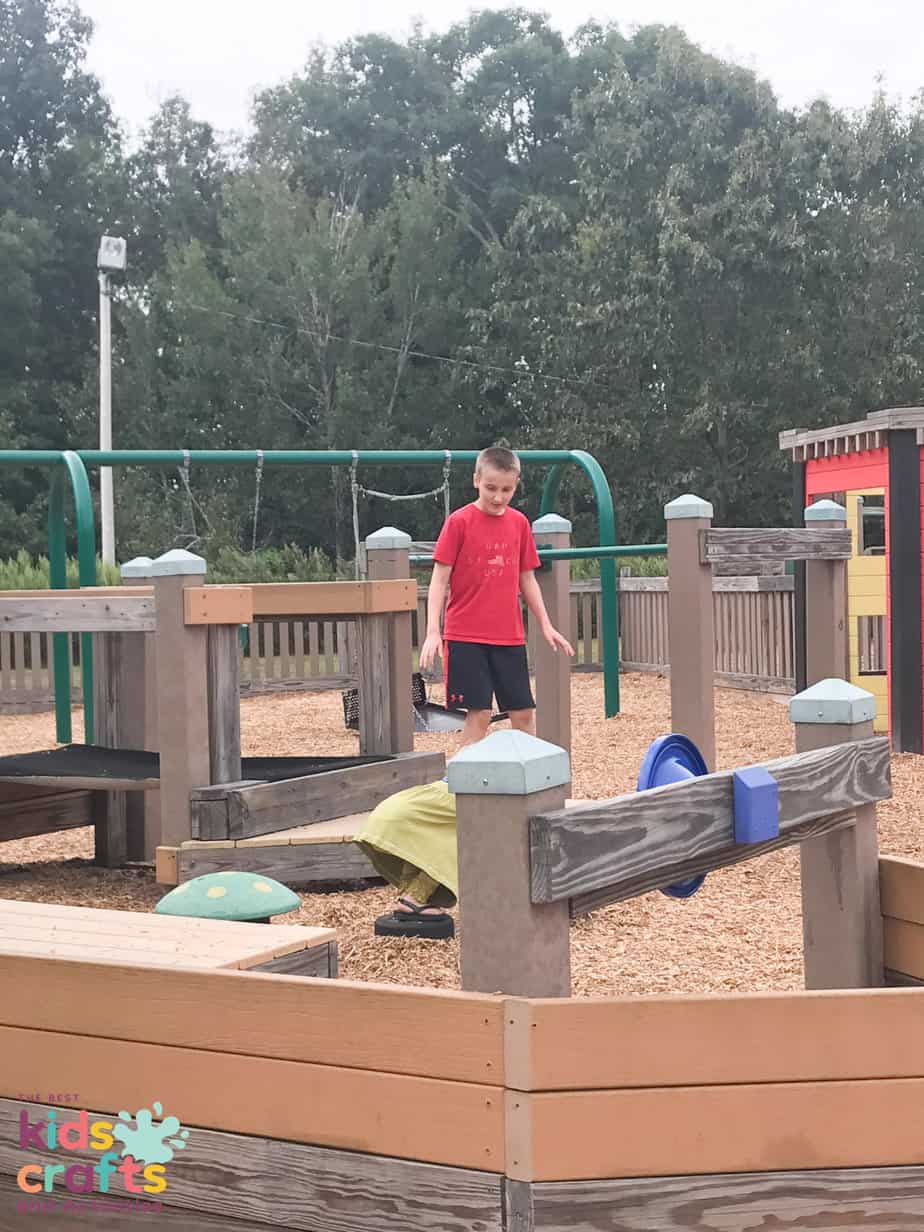
Red Rover
Red Rover is a classic outdoor game that is played with a large group of children. The objective of the game is for one team to break through the other team’s line by calling a player over to their side. Red Rover is a fun and active game that encourages teamwork and strategy.
How to play:
- Divide the group into two teams of equal size and have them form lines facing each other. Make sure there is enough space between the two lines for players to run through.
- The first team calls out “Red Rover, Red Rover, send [player’s name] right over!” The player whose name is called then runs as fast as they can towards the other team’s line, attempting to break through the linked arms of two players on the other team.
- If the player breaks through the other team’s line, they can choose one player from the opposing team to bring back to their own team. If the player does not break through the line, they must join the opposing team.
- The game continues with each team taking turns calling out a player’s name and attempting to break through the other team’s line.
- The game ends when one team has all the players from the other team.
Freeze Tag
Freeze tag is a classic outdoor game that can be played with a group of children. The objective of the game is to tag and freeze players, with the last player standing declared the winner. This is one of my kids favorite Playground Games for Kids to play with their friends.
How to Play:
- Choose one player to be “it” and have them start chasing the other players.
- When “it” tags another player, that player becomes frozen and must stand in place with their arms outstretched until they are unfrozen.
- Other players can unfreeze frozen players by crawling between their legs. Once a player crawls between the legs of a frozen player, that player can join the game again.
- The game continues until all players except one have been frozen. The last player standing wins and becomes the new “it” for the next round.
Four Square
Four Square is a classic playground game that can be played with a ball and a group of four or more players. This game is a fun and active game that encourages hand-eye coordination and strategy.
What you need: Sidewalk Chalk
How to Play:
- Draw a large square on the ground with four smaller squares inside. The squares should be numbered from 1 to 4, with the players standing in each of the smaller squares.
- The player in square 4 serves the ball by bouncing it once in their own square and then hitting it with their hands to bounce it into another player’s square.
- The player who receives the ball must hit it back into any other player’s square before it bounces more than once in their own square. If a player fails to hit the ball or hits it out of bounds, they are eliminated and must leave the game.
- The other players move up a square, with the player in square 1 rotating back into the game.
- The game continues until only one player remains, who is declared the winner.
Follow the Leader
Follow the Leader is a classic game playground Game for Kids that can be played with a group of two or more players. The objective of the game is to imitate the actions of the leader while adding your own unique movements.
How to Play:
- Choose one player to be the leader and have them begin moving around the play area.
- The other players must follow the movements of the leader, trying to keep up and imitate their actions.
- The leader should try to perform a variety of movements, such as jumping, spinning, and crawling, while also adding their own unique movements.
- After a few minutes, choose a new leader and continue the game.
- To make the game more challenging, try adding obstacles or changing the playing surface, such as moving from grass to sand or climbing over a wall.
Kids love playing games on the playground. With this list of playground games for kids, there is never a lack of fun game ideas. Most of the games on this list don’t need anything but a few kids to enjoy them.

